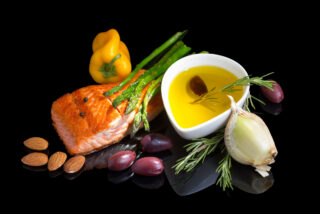
More Complementary & Integrative Healthcare Articles
Managing Pain With Nutrition

There are two types of inflammation that is experienced: 1) localized inflammation, which is described as the body’s innate response to cellular assault due to a physical injury to a specific body part that will show signs of swelling, redness, warmth, and most likely pain, and 2) systemic inflammation, which is caused by small proteins released by immune cells in the body called pro-inflammatory cytokines (PICs). The problem arises when the PICs become elevated because the immune cells are constantly stimulated to create the PICs bombarding the immune processes with more than it can handle thus creating a chronic condition that may take years to resolves if left unchecked.
What Are Common Aches and Pains Due To Inflammation?
In a nutshell, chronic pain is unchecked inflammation that has progressed over time that has caused damage to healthy cells and organs, causing constant pain in muscles, tissues, and joints. Chronic inflammation is often suggested as one of the underlying causes of various chronic painful conditions such that has the potential to be debilitating.
Inflammation in the…
- joints is called arthritis
- bones is called osteoarthritis
- lining of the uterus is called endometriosis
- nervous system one condition is called migraine
- musculoskeletal system is called fibromyalgia
- intestinal tract is called colitis
- stomach is called gastritis
The problem with systemic inflammation causing chronic pain, is the affect it has on the ability to enjoy life and move around freely without limitations.
How To Use Food to Handle Chronic Pain?
The Standard American Diet (SAD) is generally characterized by a high intake of salt, fat, and sugar with a low intake of whole grains, fiber, fruits, and vegetables which are high in micronutrients, and other bioactive molecules such as antioxidants, flavonoids, polyphenols, and omega-3 polyunsaturated fatty acids. In addition, the common food intake consists of highly processed foods, fast foods, fried foods, food high in saturated fats, trans fats, or refined and/or synthetic sugar, and have been linked as one causative factor in creating low-grade systemic inflammation.
Research shows that a whole foods holistic lifestyle, that focuses on eating whole grains, fresh fruits, fresh vegetables, legumes, nuts, and seeds as outlined by the DASH diet or a Mediterranean diet and natural healing is one of the key components that can assist in improving or counteracting the many effects of chronic pains in the body. Optimal nutrition is a major requirement for all cells in the body to function. Without proper nutrition, systemic low-grade inflammation will be the challenge to live with. In addition, there are popular spices, herbs and foods like turmeric, ginger, red wine, dark chocolate, and green tea that is reported to assist in the reduction of inflammation.
The two best things to do for chronic pain is reducing sugar and increasing water intake.

















